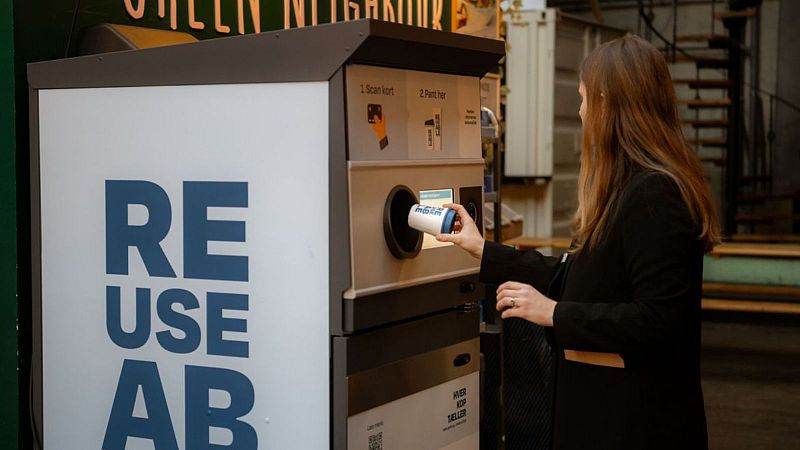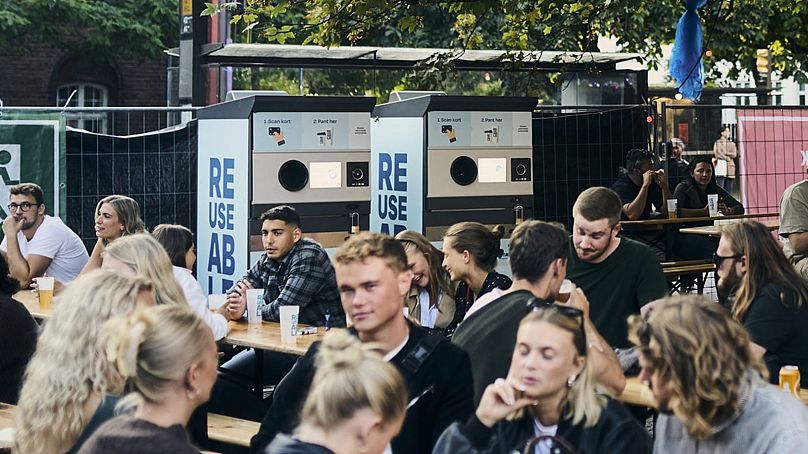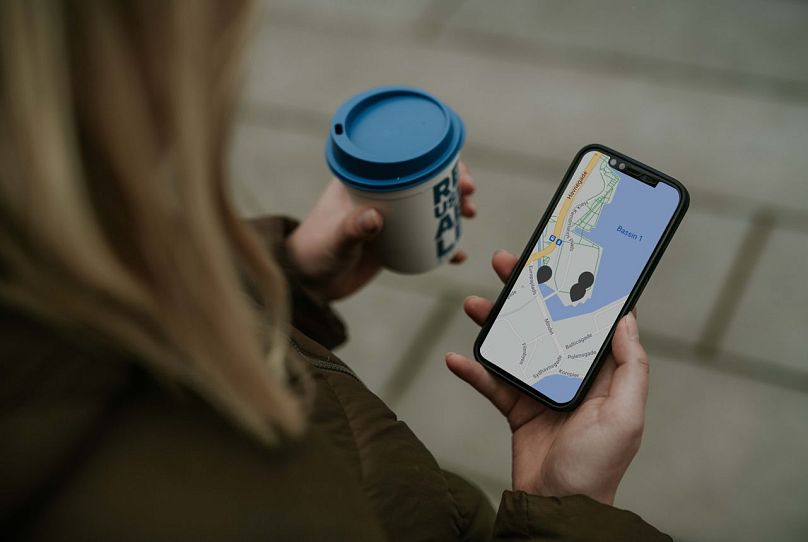People are paid to return coffee cups in this Danish city - does it work?

I slide the thick white plastic cup with its blue lid into the hole, and continue to follow the instructions written on the deposit machine.
Placing my credit card on the designated card area, a tingle tells me that in a few moments, five Danish crowns (around 70 euro cents) will be returned to my bank account.
In January 2024, the Danish city of Aarhus launched a three-year trial project to curb the number of disposable coffee cups. Instead of chucking them away, locals can use deposit machines designed by Norwegian waste management company TOMRA.
"Through waste analysis, we discovered that 45 per cent of waste in Aarhus came from takeaway packaging,” says Simon Smedegaard Rossau, project manager for circular packaging at Aarhus Municipality. “This finding was a turning point."
One year on, Aarhus is now able to share its first results, in the hope more cities will follow suit.
What is different about Aarhus’s reusable cup system?
Many European countries such as Romania, Denmark, and Belgium have introduced deposit systems that enable people to return plastic or glass bottles and cans to designated machines in supermarket chains, where they are rewarded with a small refund in return.
The Aarhus system is open air however, with machines located in the main shopping streets.
The aim is to recycle very popular products such as cold or hot beverage cups that are used for an average of just 15 minutes before going to waste. “Only less than 2 per cent of single use plastic coffee cups are recycled worldwide,” says Rossau.
The pilot did not only require building machines, deciding where to place them and creating the recyclable cups. Changing consumer behaviours was a necessary step to make the ‘reuse revolution’ happen.
"Plastic convenience has been optimised for decades, and that’s a strong force influencing consumer behaviour. If the consumer has a choice between single-use plastics and reusable ones, the adoption rate would be low,” says Geir Saether, head of TOMRA Reuse.
How did Aarhus win people over?
To convince citizens, the initiative was initially supported by 45 cafes which agreed to offer takeaway drinks in reusable cups as an alternative option to single-use cups.
In the first weeks, the return rate was only around 25 per cent and it made Rossau doubt the system would pick up. For reusable cups to be a better alternative to their single-use counterparts they need to be recycled at least six times, reaching a return rate of 82 per cent.
A turning point came during the city’s week-long festival Aarhus Uke in September, where retailers in the event exclusively offered the reuse cups. Many more citizens were exposed to them and around 100,000 cups were returned, an amount which would have filled 1,200 trash bins.
The event, says Rossau, was useful for behavioural change as it familiarised a larger part of the population with the new recyclable product.
“We now see shifts in behaviour. We see people going with bags full of cups, which means they recycle in bulk, like for cans and bottles,” says Rossau. “Now we can see the return rate is 88 per cent, which means a cup is reused 44 times.
How many plastic cups were returned in Aarhus?
The pilot programme set out to collect 500,000 cups in its first year, a target that was far exceeded as cups were returned 735,000 times, saving 14 tonnes of plastic from incineration and CO2 emissions.
For 2025, the goal is to collect 1.5 million cups, with an additional 1.5 million planned for the third year. In the pipeline, Aarhus Municipality is looking to expand to a few other nearby small cities, as well as to other forms of food packaging.
"We’ve been included in the Danish national financial plan, as policymakers recognise the scalability of the project," says Rossau. The budget secures funding for a national partnership that brings together municipalities, businesses, restaurants, and other stakeholders.
If extended nationwide, the project could significantly reduce the use of single-use takeaway packaging, which currently accounts for 500 million disposable items annually in Denmark.
Aarhus is a mid-sized town, and scaling the model to larger cities, with more complex supply chains, presents different challenges and opportunities.
How is Europe cracking down on plastic waste?
“Aarhus is just the tip of the iceberg. We've seen a lot of momentum from cities like Barcelona, Berlin, Leuven, Ghent, Rotterdam, and Paris battling against the packaging waste crisis by strengthening their reuse systems,” says Nathan Dufour, reuse systems manager at Zero Waste Europe.
These actions support the EU's broader waste reduction goals, within the recently approved Packaging and Packaging Waste Regulation (PPWR). The PPWR mandates that member states cut packaging waste per capita by 5 per cent by 2030, with further reductions by 2035 and 2040.
“Thanks to the PPWR we finally have EU-wide targets on reusable packaging for takeaway, beverages, quick service industries, postal deliveries, and many other segments,” says Dufour. But it is still not enough, he adds. “Cities have been leading the way where a patchwork of regulations have failed, we need to support national targets.”
Broader legislative support is needed to ease the significant costs of launching and maintaining citywide systems of reusable packaging, as well as the logistical hurdles of cleaning and redistributing the cups.
"The transition to reuse requires strong policy interventions such as levies, reuse targets, and bans on single-use packaging," TOMRA’s Sæther says.
Bans on single-use plastic have proved effective, but plastic production is expected to triple by 2060. “To level the playing field [to single use plastic], we must factor in external costs, like pollution, through measures such as taxes on single-use packaging," he adds.
The role of policymakers will be crucial in determining the pace and success of this transition to make reuse packaging systems efficient and convenient for vendors and consumers.
“Circular shifts do not happen by accident - they need to be supported by interventions that shape the behaviour of both businesses and consumers. It is as simple as providing incentives for choosing sustainable options and penalising wasteful practices,” Sæther concludes.



